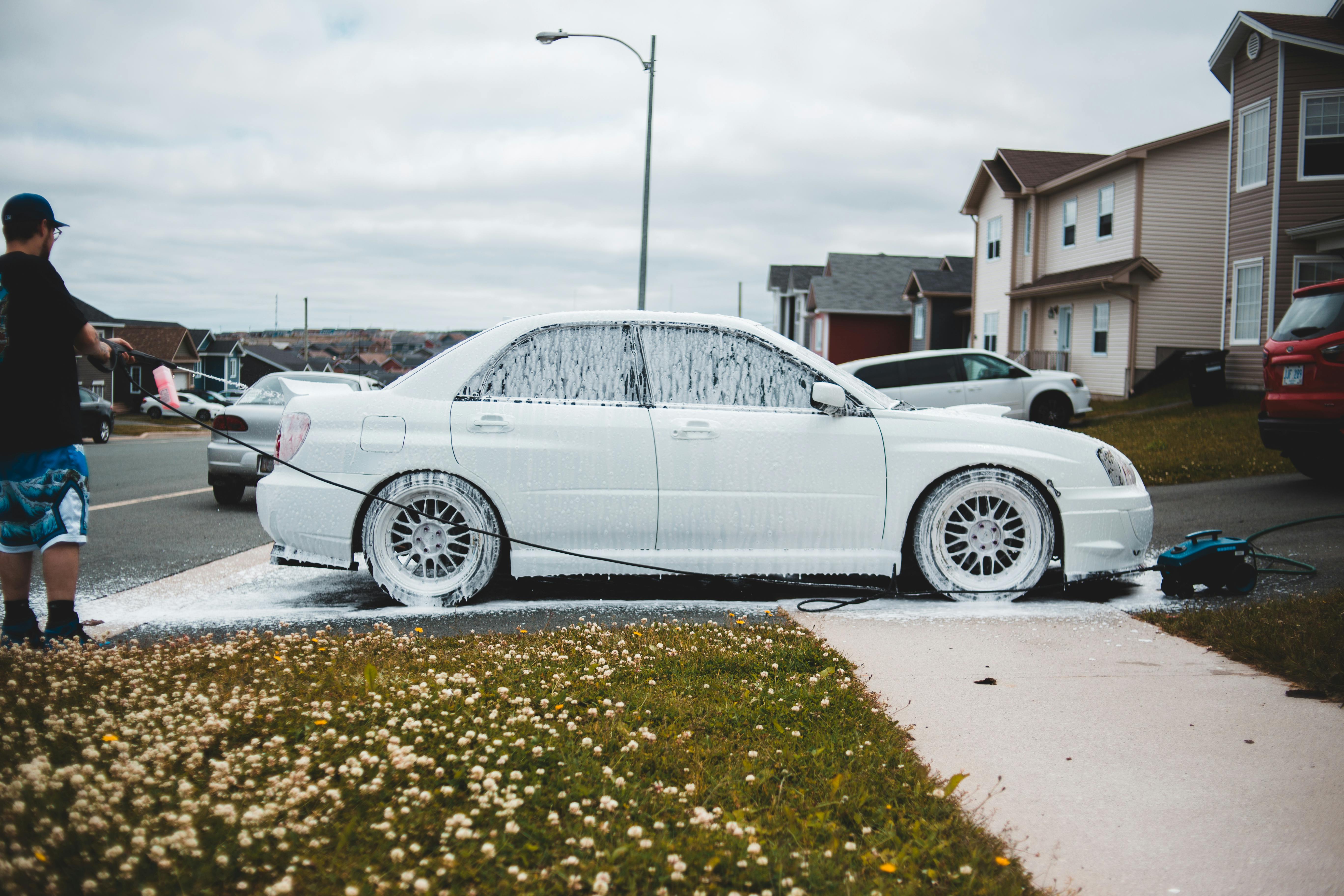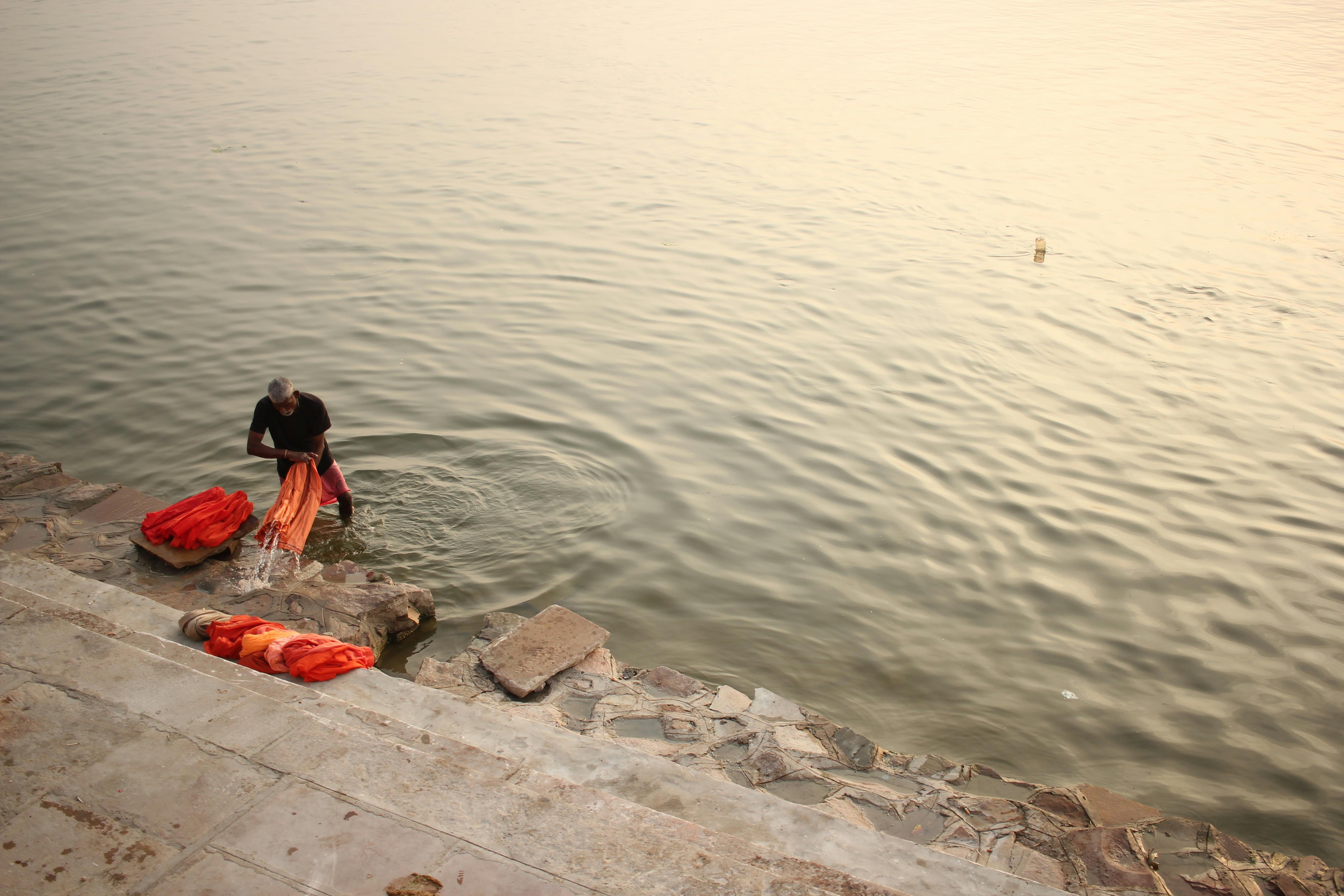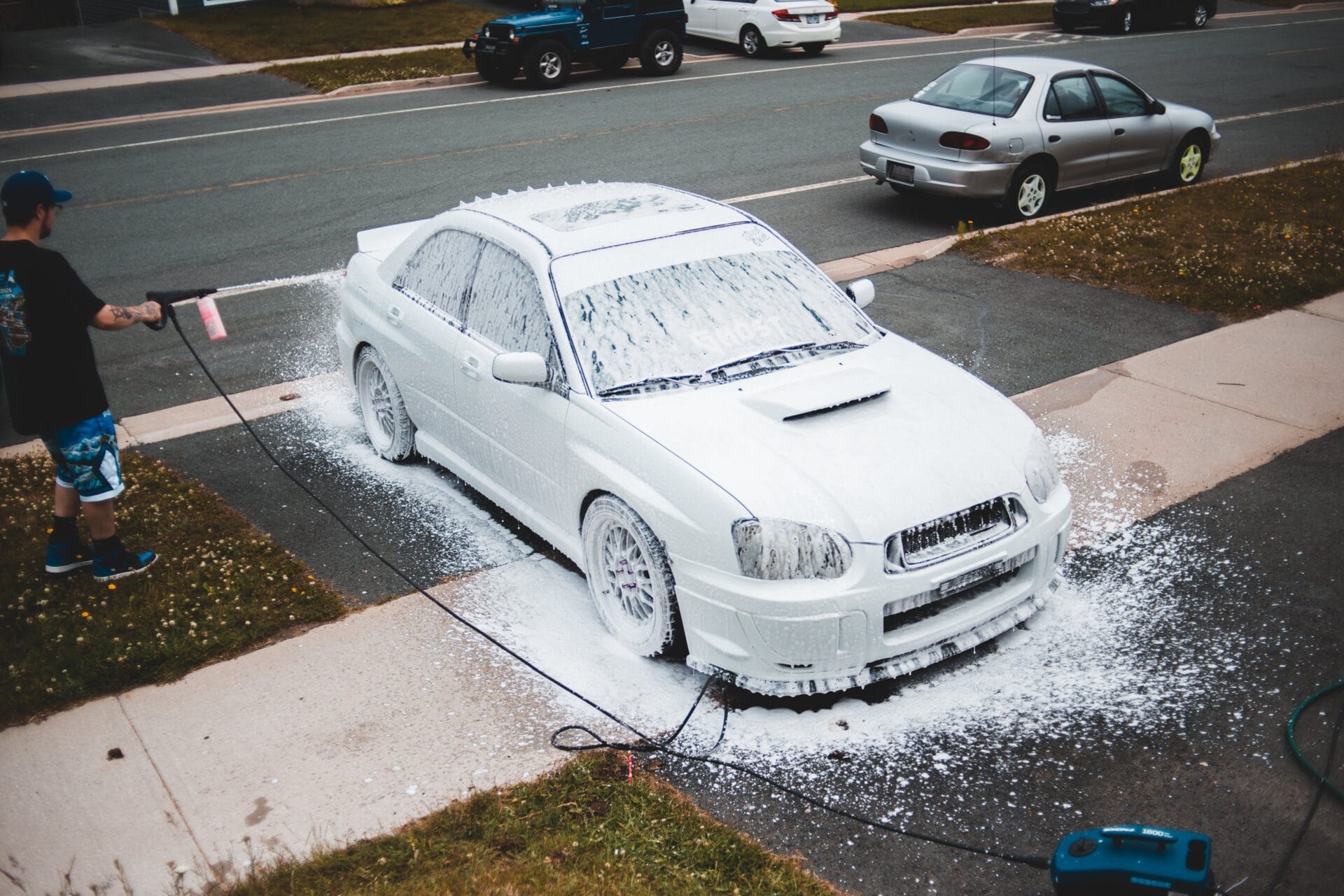If you have recently noticed water leaking from underneath your GE washer, you may be wondering why this is happening. This is a common problem that can be caused by a variety of issues, such as a faulty hose, loose connection or worn gasket. In this article, we will look at the possible causes of this issue and how to fix it.A GE washer can leak water from underneath if there is a problem with the water supply hoses, the drain hose, the pump, or the tub. If the water supply hoses are old and worn, they may not be providing a tight seal and water may be leaking out. The drain hose can also become blocked or cracked, causing a leak. If the pump is clogged or malfunctioning, it can cause water to leak from the back of the washer. Lastly, if there is an issue with the tub itself, such as a crack or hole in it, this can cause water to leak out from underneath.
How Can I Fix a GE Washer Leak from Underneath?
When it comes to washer leaks, the source of the leak can often be difficult to find. If you’re dealing with a GE washer leak from underneath, the first step is to identify the source of the leak. In some cases, it could be a problem with a hose or pipe that needs to be replaced. It could also be an issue with the washer’s gasket or drain system. Regardless of what is causing the leak, there are steps you can take to fix it.
First, you will need to locate and identify any hoses or pipes that may have been damaged or are leaking. Check all connections and look for any signs of damage such as cracks or tears in the rubber material. If you find a damaged hose or pipe, replace it immediately.
If there are no visible signs of damage on any hoses or pipes, it’s likely that the washer’s gasket is causing the leak. The gasket is responsible for creating an airtight seal between two components within the machine so if it has become worn out over time, it may not be able to do its job properly resulting in a leak. Replacing a worn out gasket is relatively easy and can usually be done without having to replace any other parts within the machine.
Finally, if neither of these solutions resolves your issue then you may need to check your washer’s drain system for signs of blockage or leakage. If your drain system is clogged, try using a plunger or drain snake to clear away any debris that may be blocking the flow of water through the system. If you discover any leaks in your drain system, you will need to repair them by tightening connections and replacing any worn out parts as necessary before running another cycle on your machine.
By taking these steps and properly diagnosing where exactly your GE washer leak is coming from underneath, you can successfully fix any issues and restore normal operation of your washing machine again in no time.
Leaking water
A GE washer may start leaking water for a variety of reasons. It could be due to a worn-out seal, a damaged hose, or an issue with the inlet valve. Additionally, if the machine isn’t level, it may begin to leak water. Poor drainage or a clogged drain hose can also lead to water leakage. In some cases, the washer is leaking because of an overloaded load of laundry. Lastly, the detergent dispenser drawer could be malfunctioning and causing leaks.
Fortunately, all of these issues can be easily fixed by inspecting and cleaning the washer’s components. To diagnose the problem accurately, it is best to refer to the user’s manual or contact a certified technician for assistance. If necessary, replacement parts such as hoses and seals can be purchased from authorized service centers or online stores. With just a few simple steps, you can solve common problems that cause GE washer leaks and enjoy hassle-free operation for years to come.
Is the GE Washer Drain Hose Causing the Leak?
Leaks in a GE washer can be caused by several different issues, but one of the most common culprits is a faulty drain hose. The drain hose is responsible for transporting water from the washer to the drain and if it becomes worn or damaged, it can cause leaks. In some cases, a loose connection or clogged drain pipe can also lead to leaks. If you suspect that your GE washer’s drain hose is causing a leak, there are several steps you can take to address the issue.
First, inspect the hose for any visible signs of damage such as holes or splits. If you find any damage, replace the hose with a new one. Make sure that all connections between the hose and the washer are tight and secure to avoid any further leaks. You should also check for clogs in the drain pipe and remove any debris that may be blocking it.
If your GE washer is still leaking after checking and addressing these potential causes, you may need to have a professional inspect the machine for any other potential issues such as faulty seals or valves. A professional technician will be able to assess your machine’s condition and determine what needs to be done in order to stop any further leaks.
In summary, if you suspect that your GE washer’s drain hose is causing a leak, inspect it for damage and make sure all connections are tight and secure. Additionally, check for clogs in the drain pipe and remove any debris that may block it. If these steps do not resolve the issue, contact a professional technician who can assess your machine’s condition and determine what needs to be done in order to stop further leaks.
Inspecting the Water Inlet Hoses on a GE Washer for Leaks
Checking the water inlet hoses on a GE washer for leaks is an important part of maintaining the appliance. Leaks may occur at any time and can cause costly damage to your washer and other connected appliances. It is important to inspect the water inlet hoses regularly to ensure that no leaks are present.
Begin by locating the water inlet hose connection behind your washer. This will typically be located near the bottom of the machine, but may vary depending on your model of GE washer. Once you have located the connection, check for any signs of wear or damage. If any damage is present, it is likely that a leak could occur.
If no signs of damage are visible, check for any loose connections or fittings along the length of the hose. You should also check that there are no kinks or bends in the hose, as this could restrict water flow and cause a leak. Finally, turn off all power to your washer and turn on all valves supplying water to it before testing for leaks with a damp cloth or paper towel wrapped around each connection point.
If any leaks are found during inspection, you should replace both hoses immediately as this will help prevent further damage to your appliance and other connected appliances from occurring. Make sure that you use hoses that are designed specifically for use with your GE washer model as these will provide a secure fit and good seal against leaks.

Check the Pump Assembly and Drain Hose for Clogs or Damage
It is important to check the pump assembly and drain hose for any clogs or damage that might be preventing your washing machine from draining properly. If you notice a clog, you should first attempt to remove it using a plumbing snake or other suitable tool. If there is significant damage to either the pump assembly or drain hose, it may be necessary to replace them in order to restore proper draining in your washing machine.
When checking for clogs, you should also check the drain filter at the bottom of the washing machine for any debris that may be blocking the drain. You may also need to remove any lint traps or screens in order to inspect deeper into the system for potential clogs. If you do not find any clogs after thoroughly inspecting all components, then it is likely that there is an issue with your pump assembly or drain hose.
In either case, if you suspect there is an issue with your pump assembly or drain hose, it would be wise to seek professional help from a qualified appliance repair technician who can diagnose and repair any issues with these components.
What to Do if the Tub Seal is Damaged on a GE Washer
If you notice water leaking from your GE washer, it could be due to a damaged tub seal. This is a common issue and can be easily fixed. The first step is to unplug the washer and turn off the water supply. You will then need to remove the top panel of the washer, which will allow you access to the tub seal.
Once you have removed the panel, check for any signs of wear or damage on the tub seal. If there are signs of damage, it may be necessary to replace the seal completely. To do this, you will need to carefully remove the old seal and install a new one. Depending on your model of washer, this may require special tools or parts which can be purchased from your local appliance parts store.
It is important that you make sure that all of the screws and bolts are securely tightened when reassembling your washer after replacing or repairing your tub seal. Once everything is in place, turn on your water supply and plug in your washer again. You should now find that there are no longer any leaks from your machine and it should work as normal.
If you do not feel comfortable attempting this repair yourself, it may be beneficial to call in a professional technician who can diagnose and repair any issues with your washing machine’s tub seal quickly and safely.
Look at the Dispenser and Detergent Tray for Potential Leaks
It is important to regularly inspect the dispenser and detergent tray for potential leaks. This will help ensure that your washing machine is functioning properly and that there are no signs of a malfunction. Leaks in the dispenser can cause water to leak out of the washing machine, while a leak in the detergent tray can cause detergent or fabric softener to leak out. Both of these problems can cause serious damage to your clothing and potentially result in costly repairs or replacements.
To begin, inspect the dispenser for signs of cracks, wear, or any other damage that could be causing a potential leak. If you find any damages, it is important to repair or replace the part as soon as possible to prevent further damage. It is also important to check that all of the seals and gaskets are functioning properly and are not worn out or broken.
Next, inspect the detergent tray for any signs of wear, cracks, or other damage. If you find any damages here as well, it is important to repair or replace this part as soon as possible to prevent further damage from occurring. Additionally, make sure that all of the seals and gaskets are functioning properly and are not worn out or broken.
Finally, if you notice any leaks coming from either the dispenser or detergent tray, it is essential to have them repaired immediately. Leaks can cause water damage or mold growth, which can be costly and time-consuming to repair. It is also important to check for any other signs of leakage around your washing machine so that you can take appropriate steps to fix them quickly before they become a more serious problem.

Conclusion
Leaks from underneath your GE washer can be caused by a variety of problems. These include a faulty drain hose, a cracked tub, or a worn-out seal. The best way to determine the cause of the leak is to check the hoses, inspect the washer for any signs of damage, and replace any worn-out parts.
If you are unable to identify and repair the issue yourself, then you should contact a professional for assistance. A qualified technician will be able to diagnose and repair the underlying cause of your GE washer’s leak quickly and efficiently.
It is important to address any water leakage problems with your GE washer as soon as possible. Not only can they cause water damage within your home, but they can also lead to costly repairs if not dealt with in a timely manner.
By following these simple steps, you can ensure that your GE washer is operating in peak condition and that it does not suffer from unnecessary leaks or damages in the future.

